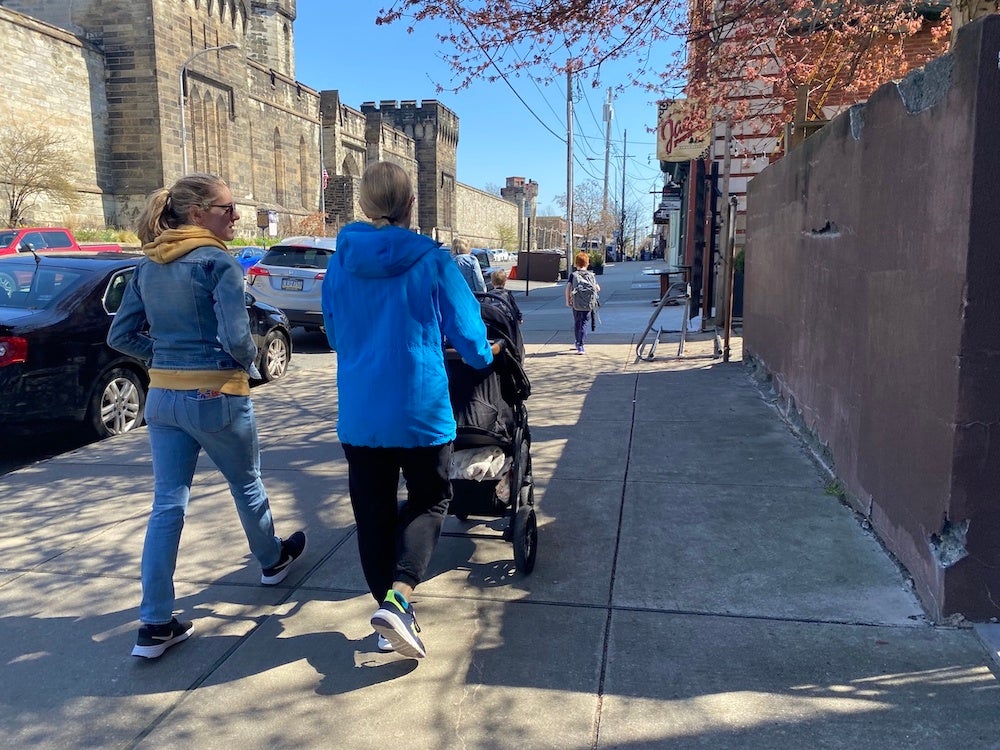Move over, mid-life crisis: The quarter-life crisis has arrived
Researchers explain how to cope with competitive housing markets, high inflation, and overall stress.

(Courtesy of BigStock)
“Where’s my money going?” asked Melissa Payavis.
Payavis, 26, is a young professional who lives and works in Center City. She works for a large company that offers her health benefits, and somewhat competitive pay, but she is still barely scraping by.
This seems to be a common phenomenon for young people these days, with the burdens of many financial stressors like student loan debt, rising inflation, and a demanding housing market in both renting and buying sectors. Not to mention the nightmare that is finding health care benefits and insurance.
To some, it feels a bit like a quarter-life crisis.
Young people are expressing over social media, and even through songs, that there is a new condition looming in the air, maybe akin to something we have heard before — the mid-life crisis.
The infamous mid-life crisis is known for its halfway-through-life sentiments of empty nest syndrome, or even just what’s next after a long career in corporate America. Its target audience experiences it sooner, at a far younger age of life.
“If you have the money and resources to move, or to go to an area that’s less taxed, then that’s an option for people,” Payavis pointed out. “But, again, that’s only for the people that are able to do that.”

Researchers, economists, and financial advisors have data suggesting that the housing market is one of the greatest financial burdens for young Americans right now.
Dr. Lindsay Relihan is an assistant professor in economics at the Krannert School of Management at Purdue University in Indiana and is an expert in urban economics, household finance, and real estate. Her research can illuminate the effects of the housing market boom and how it might be affecting young folks.
“I suppose there are other sorts of components [as to] why being financially stable as a young person or household is very difficult these days but housing has to be the top reason,” Relihan said.
The Federal Reserve Board of Governors reported in 2021 that “about half of renters with income between $25,000 and $49,999 had rent payments that exceeded 30 percent of their income.”
This leaves many cost-burdened and without the access to the economic resources to advance themselves — or even to just get by. This is true for Payavis.
“I pay for everything myself now, even though my salary [does not] always totally cover all my expenses, and I was actually able to get some financial help from my mom,” Payavis said.
Dr. Caitlin Gorback, assistant professor of finance at the Macomb School of Business located at the University of Texas, focuses on urban economics and residential real estate and explains the aberrance many young people are facing.
“We do have a lot of good evidence showing that people who graduate during recessions [and] enter the workforce during a recession, your kind of permanent income on average is lower,” Gorback explained.
A lower average income can cause a whole host of other issues at hand entirely. This can lead to young adults needing more support either emotionally or financially and they either live at home and commute to school or move back home after college.

Shaylyn Forte, a self-employed Licensed Professional Counselor who practices in Philadelphia, sees this play out on a daily basis with her clients.
“It’s creating a lot of imposter syndrome for people in this young generation,” Forte said. “[Things like] I’m being told that I’m an adult, I’m the age of an adult, but I don’t own my own home, and I don’t own my car, and I’m working multiple jobs, or I’m living with my parents. And so it creates this cognitive dissonance and this discrepancy between, ‘Am I actually an adult?’”
Young people seem to be living at home at a much higher rate than in previous years.
Pew Research Center reported: “In July 2022, half of the surveyed adults ages 18 to 29 were living with one or both of their parents. This was down from a recent peak of 52% in June 2020 but still significantly higher than the share who were living with their parents in 2010 (44% on average that year) or 2000 (38% on average).”
Research suggests this can be caused by a myriad of factors, including but not limited to the stagnancy of wages, student loan debt, the rise of inflation, high interest rates, rental prices, and mortgage down payments.
Since COVID-19 the housing market — already subject to cyclical forces — has been much harder for young people without much money to take part.
“Since interest rates have risen, the interesting dynamic there is that house prices haven’t fallen, the supply is so tight, they sort of just moderated house price growth,” Relihan explained. “But it has restricted people from switching from the rental market to the housing market. And because you have so many people who are sort of being backlogged, the rental market has kept rents rising faster.”
Culminating with the fact that insurance companies have changed rates in areas that have experienced the impact of climate change.
“Additionally, insurers are starting to take into consideration another extreme case [like the] wildfires in California,” Gorback said. “So you’re seeing, climate risk being incorporated into underwriting standards as well, which is going to increase the cost of either providing homes directly [by] the builder or buying homes as a consumer.”
With an overall shortage of housing in both the rental and buying markets, it can leave people feeling discouraged. Forte explains that not all hope is lost, and there are strategies to keep on track mentally and financially.
“I always use this formula with my clients of problem solution, barriers solution,” Forte said. “Usually we’re used to just doing problem solution. But it doesn’t really set you up for success. Because a lot of the time there are these bumps in the road that unless you predicted, anticipated, and planned for they’re going to derail you.”
This kind of planning can start small and grow over time — for example, Pavayis tries to spend less on take-out food and rely more on cooking as she tries to save money during this time in her life. This small step can turn into more complex budget and time management planning to set younger people up for success.
Relihan asks pointed questions of smaller cities to look at how to avoid an affordability conundrum that is ever-present in cities like New York and Los Angeles.
“We can do better, smarter development that anticipates having a bunch of people move here,” Relihan stated. “What are the infrastructure investments that we should make now? What are the zoning changes we should make now so that we can accommodate that kind of influx without creating the same affordability crisis? So that would be something that I would like to see happen for that policy space.”

Get daily updates from WHYY News!
WHYY is your source for fact-based, in-depth journalism and information. As a nonprofit organization, we rely on financial support from readers like you. Please give today.






